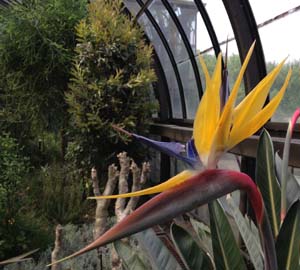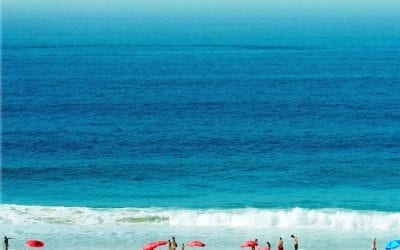Editor’s note: Edward Hasbrouck has traveled through Argentina, where this year’s The Amazing Race is taking place. He has some suggestions about other less mainstream places to enjoy in Argentina where the value for money is greater and the experience far more genuine. This is one week of his ongoing coverage of The Amazing Race. I found Edward’s coverage of this week to be especially excellent.
![[La Soñada Posada, along RP14 in La Población, Córdoba Province]](http://consumertraveler.com/wp-content/uploads/la-sonada-posada.jpg) This month, in an recent episode, The Amazing Race 27 left Buenos Aires for San Antonio de Areco, which has branded itself as the leading destination in Argentina for “gaucho tourism”. If you ask a location consultant for a gaucho town, they’ll send you to San Antonio de Areco. (Many travel writers, as destination experts, also freelance as location consultants and “fixers” for movies, TV shows, advertisements, and other film and photo shoots.)
This month, in an recent episode, The Amazing Race 27 left Buenos Aires for San Antonio de Areco, which has branded itself as the leading destination in Argentina for “gaucho tourism”. If you ask a location consultant for a gaucho town, they’ll send you to San Antonio de Areco. (Many travel writers, as destination experts, also freelance as location consultants and “fixers” for movies, TV shows, advertisements, and other film and photo shoots.)
Almost by definition, a place that is known as the “most typical” of anything of interest to international tourists probably isn’t typical of anything except the culture of international tourism. Tourism, especially mass tourism by people from far away and from very different cultures, changes everything it touches. The most typical places don’t show up on any “must-see” list. I’ve referred to this here and here as the “Hasbrouck Uncertainty Principle of travel”.
For every town like San Antonio de Areca in any country, there are many more towns like, to give just one Argentine example I happened upon earlier this year, Merlo, San Luis Province: a holiday destination for domestic tourists that few foreigners have ever heard of. There are even more towns like Las Rosas or others we passed through while travelling across Argentina by bicycle, “places in between” that see no tourists of any sort.
![[With one of the welcoming watchcats at the Posada del Valle in Merlo]](http://consumertraveler.com/wp-content/uploads/posada-del-valle.jpg) Merlo is a growing weekend and holiday getaway destination and retirement community and secondary gateway to the west side of the Central Sierras. Most visitors and residents come from the provincial cities of San Luis and Villa Mercedes, not from Córdoba (closer but on the other side of the mountains) much less the Federal Capital. Merlo isn’t even mentioned in some of the most popular guidebooks to Argentina for foreign visitors. Merlo does get brief treatment in Wayne Bernhardson‘s more eclectic and in-depth “Moon Argentina”, although not as a place Wayne especially recommends. There are enough retirees in Merlo that restaurants and other businesses that serve tourists are open all year, but despite what locals claim is the best year-round microclimate in the country, it’s a low-key little town in low season that had lots of empty beds available at highly-negotiable discounts. For all I know, however, it might be an overcrowded and overpriced tourist trap in peak season.
Merlo is a growing weekend and holiday getaway destination and retirement community and secondary gateway to the west side of the Central Sierras. Most visitors and residents come from the provincial cities of San Luis and Villa Mercedes, not from Córdoba (closer but on the other side of the mountains) much less the Federal Capital. Merlo isn’t even mentioned in some of the most popular guidebooks to Argentina for foreign visitors. Merlo does get brief treatment in Wayne Bernhardson‘s more eclectic and in-depth “Moon Argentina”, although not as a place Wayne especially recommends. There are enough retirees in Merlo that restaurants and other businesses that serve tourists are open all year, but despite what locals claim is the best year-round microclimate in the country, it’s a low-key little town in low season that had lots of empty beds available at highly-negotiable discounts. For all I know, however, it might be an overcrowded and overpriced tourist trap in peak season.
We were the only guests throughout our week’s stay at the Posada del Valle, an outstandingly comfortable and friendly bed and breakfast that managed to provide the ambiance of a quiet country inn on spacious and secluded grounds despite being only a block off the main tourist strip.
Merlo is located on one of the best stretches of road for bicycle tourists that we found in Argentina: San Luis RP1, which becomes Córdoba RP14 where it crosses the provincial border just north of Merlo. It’s well-paved and has relatively frequent accommodations and other services but little traffic for most of its length, a rare combination of attributes for an Argentine road. The road winds along the western edge of the mountains, with generally modest grades and often spectacular views of the wall of mountains on one side and the semi-desert plain on the other.

The last time The Amazing Race went to a “parilla” (barbecue) in Argentina ten years ago, the challenge was what and how much the racers could eat. This time the task was cooking: a member of each team of two racers had to properly crucify two whole lamb carcasses and a rack of beef ribs on iron frames staked out in the right position for grilling alongside and angled over an open fire.
The racers kept calling out, “Gaucho!” to have their culinary prep work inspected by an expert. The proper title for the pit boss or grill master of a parilla, however, is “asador”.
Like “chef de cuisine”, asador is an honorific, not just a job title. At the Esquina del Sol in Merlo, for example, the asadors tend their parilla in a theatrically-floodlit glass-walled enclosure in the place of honor in front of the restaurant.
Two whole carcasses may seem like a lot of meat for each of the racers to have to put on the grill at once. But it’s not an uncommon sight at a parilla restaurant. There’s beef and lamb on the menu at La Esquina del Sol, but the specialty of the house is the “cabrito” for which Merlo is known: kid goat from the Comechingones mountains that rise above the town. There’s was always at least one goat, usually at least two, staked out by the fire whenever we passed by.
The proprietor told us that diners at this one restaurant consume a dozen whole kid goats on a typical weekday in low season, and thirty on an average day in the summer tourist season. Volume doesn’t always coincide with quality, of course, but in this case perhaps practice does make perfect. I love goat meat, and have eaten it prepared in many ways (stewed, curried, roasted, grilled, etc.), but this was some of the best I’ve ever tasted.
My point isn’t that everyone should go to Merlo. They shouldn’t, and if they did, it would be a different place reshaped by the desires and expectations of foreign tourists, and where foreigners would get a different (if not necessarily less hospitable) reception. Merlo is just one example of what you, too, might find if you don’t limit your travelling to places that anyone has recommended — a place I had never heard of before, but that was one of the unexpected highlights of our trip.
The winner of a 2003 Lowell Thomas Travel Journalism award for investigative reporting from the Society of American Travel Writers Foundation for his in-depth reporting on the privacy of travel records, Hasbrouck protects the freedom to travel, the privacy of travelers, and their right to control how personal travel records are used by travel companies and government agencies.



